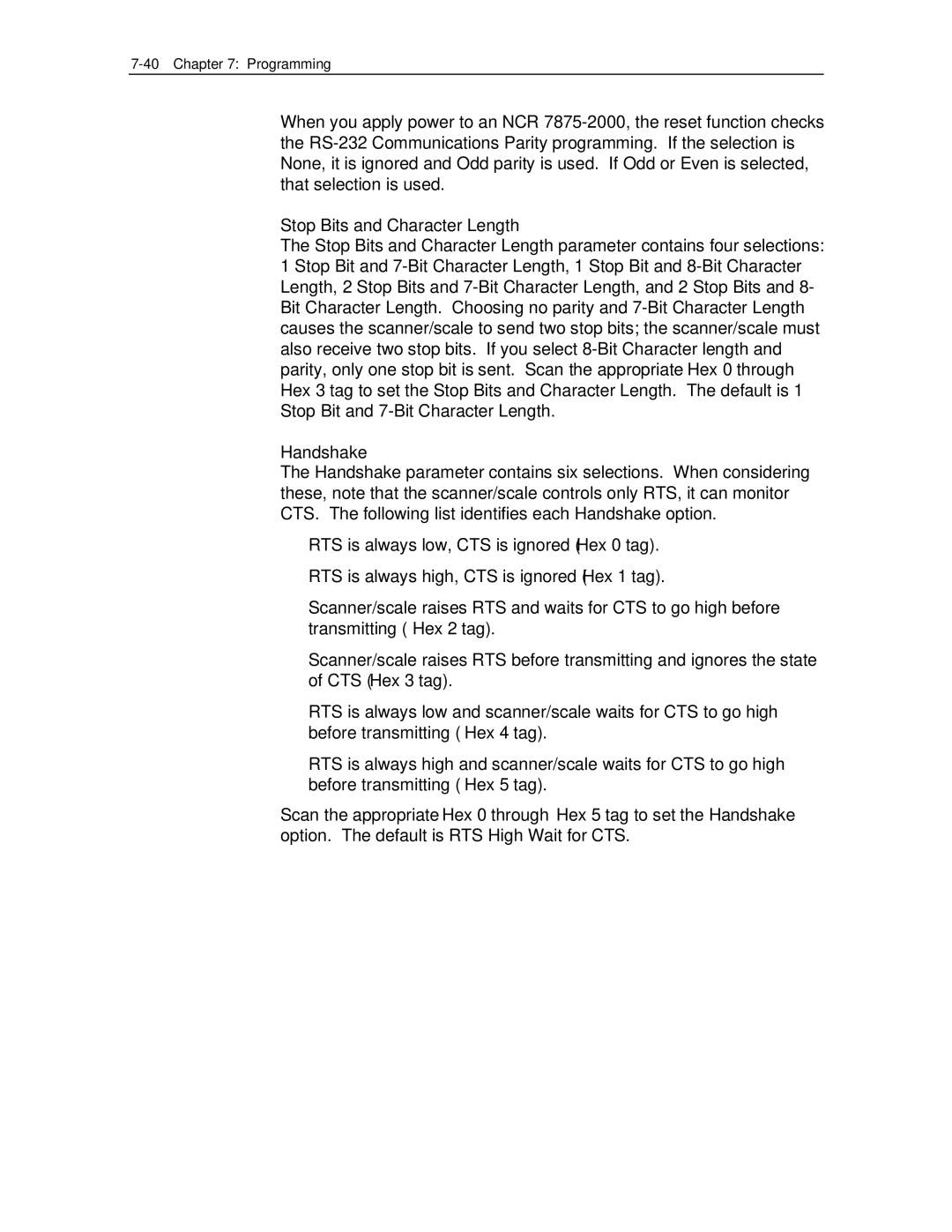7-40 Chapter 7: Programming
When you apply power to an NCR
Stop Bits and Character Length
The Stop Bits and Character Length parameter contains four selections: 1 Stop Bit and
Handshake
The Handshake parameter contains six selections. When considering these, note that the scanner/scale controls only RTS, it can monitor CTS. The following list identifies each Handshake option.
•RTS is always low, CTS is ignored (Hex 0 tag).
•RTS is always high, CTS is ignored (Hex 1 tag).
•Scanner/scale raises RTS and waits for CTS to go high before transmitting (Hex 2 tag).
•Scanner/scale raises RTS before transmitting and ignores the state of CTS (Hex 3 tag).
•RTS is always low and scanner/scale waits for CTS to go high before transmitting (Hex 4 tag).
•RTS is always high and scanner/scale waits for CTS to go high before transmitting (Hex 5 tag).
Scan the appropriate Hex 0 through Hex 5 tag to set the Handshake option. The default is RTS High Wait for CTS.
